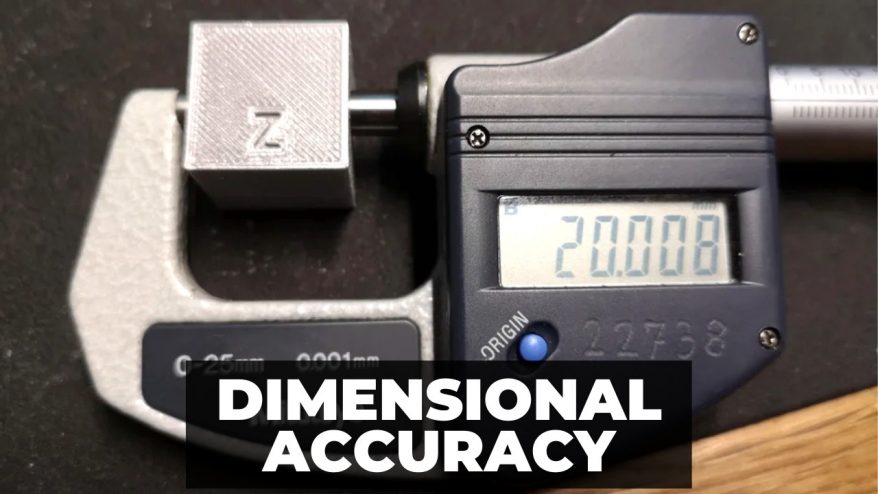
3D Printing Dimensional Accuracy: How to Maximize Precision


At 3DSourced we’ve covered everything 3D printing and 3D since 2017. Our team has interviewed the most innovative 3D printing experts, tested and reviewed more than 20 of the most popular 3D printers and 3D scanners to give our honest recommendations, and written more than 500 3D printing guides over the last 5 years.
Dimensional accuracy is crucial in ensuring a 3D printer’s precision for perfect prints. If too far off in any direction, the model you’re printing won’t turn out the way it should – or at least not how you imagined.
In this article we’ll cover:
- What is dimensional accuracy
- What affects it
- And how to improve it to get the best models every time
What is Dimensional Accuracy in 3D Printing?
Dimensional accuracy in 3D printing refers to how closely a finished model resembles the dimensions laid out in the file from which it’s printed.
While anomalies in the occasional model are to be expected, the more accurate the dimensions, the closer your finished print will be to your sliced file.
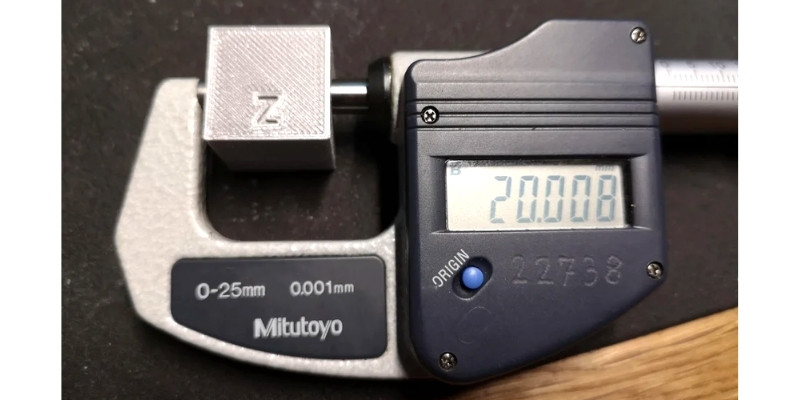
How Important Is Dimensional Accuracy in 3D Printing?
While high dimensional accuracy is ideal for reliable printing, it doesn’t need to be exact – nor is this possible for 3D printers (or even CNC machines). Decorative or otherwise static prints are fine even if not completely accurate, as just a few millimeters off is imperceptible to the naked eye.
However, if you’re printing strong parts designed to work in machines or other complicated 3D printer projects, dimensional accuracy is crucial.
Gears and the like will only work at maximum efficiency if they are the perfect size, and will be less reliable or even downright useless if inaccurately printed.
So if you’re 3D printing parts for engineering projects, you should take the steps we’ll discuss today to ensure dimensional accuracy and 3D printer precision.
Testing for Dimensional Accuracy
Before setting out to improve your dimensional accuracy, you should check to see if the accuracy itself is the problem. If you’re encountering warping, shrinkage, and inaccurate prints, it could be down to a number of issues like poor bed adhesion or filament grinding.
Checking your printer’s base accuracy is as easy as doing a simple test print. Once done, you can check your print’s dimensional accuracy and assess if tweaks are required.
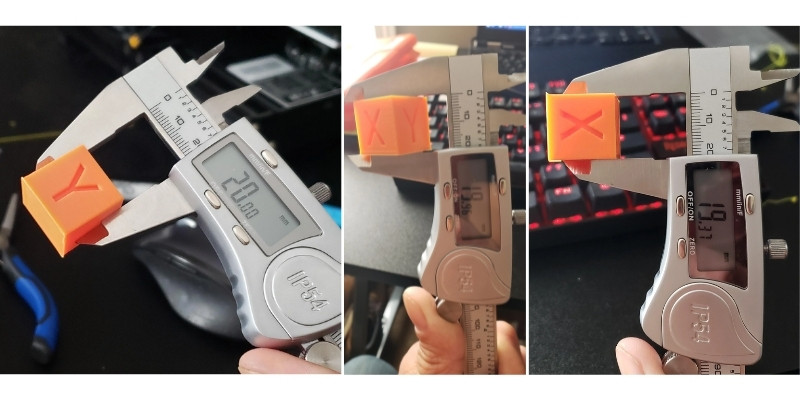
As a rule of thumb, a dimensional difference of around 0.2mm is fine, with 0.1mm being ideal.
If you’re having trouble finding the exact right settings, then remember that it’s better to be over than under in terms of dimensional accuracy. You can always remove excess thickness, but you can’t always add it back on.
How Can Dimensional Accuracy Be Improved?
The dimensional accuracy of your 3D printer is affected by a number of factors:
- Nozzle Height/Axes Settings
- Frame Sturdiness
- Printer Settings (Temperature, Cooling, Speed, etc.)
- Filament Type
- Efficient Extrusion
If you’re having issues with inaccurate prints, including shrinkage, warping, or drooping, then be sure to increase the dimensional accuracy of your 3D printer with the following steps.
Double-Check Axes Settings
Dimensional accuracy and 3D printer precision often come down to having the ideal settings for your X, Y, and Z axes.
To improve dimensional accuracy, first be sure to set your nozzle to an ideal height, which is no more than 2mm off. You can double-check this with a sheet of paper, ensuring that there’s just enough space for it to fit between the nozzle and the print bed.
If you think it’s still too high, then make sure you don’t go any lower than 0.06mm, but be careful as this can lead to over-retraction issues.
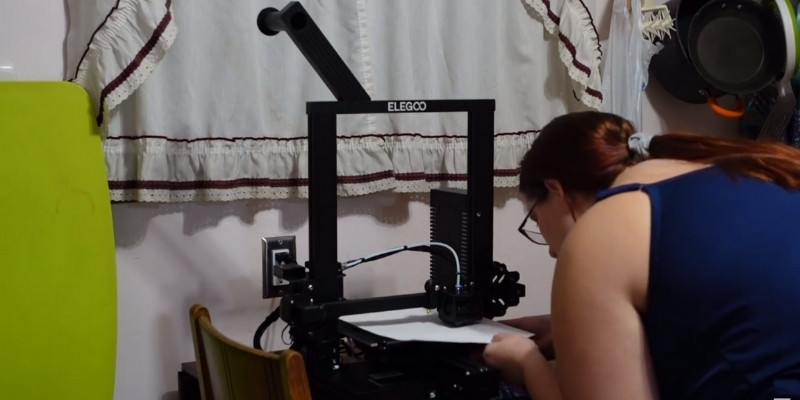
Calibrating your axes can be done in your preferred slicer software, and it’s good to get into the habit of double-checking them before printing to ensure heightened precision.
Check Your 3D Printer Frame
Sometimes dimensional inaccuracy is a hardware issue. Loose parts or a less-than-sturdy frame will cause vibrations, that will disrupt your printer’s precision.
This not only leads to ‘ghosting’ (unwanted rings on the surface of your print), but will affect the dimensional accuracy of your model overall.
Making sure your printer frame, along with the rods and bearings that keep it going, are all sturdy and well-aligned will greatly improve both the accuracy and reliability of your prints.
But remember that FDM printers rely on moving parts, so don’t tighten things up too well as this will hinder movement and even cause the parts to grind together unnecessarily, which will damage your machine and cause more vibration-related problems over time.
First Layer Impact
Oftentimes, 3D printer precision comes down to incorrect settings that start your model off on the wrong foot.
By increasing or decreasing settings like print speed, extruder temperature, and cooling fan speed during test prints is a good way to find the ideal settings for your filament’s initial bed adhesion, holding it firm while the rest of the model prints accurately.
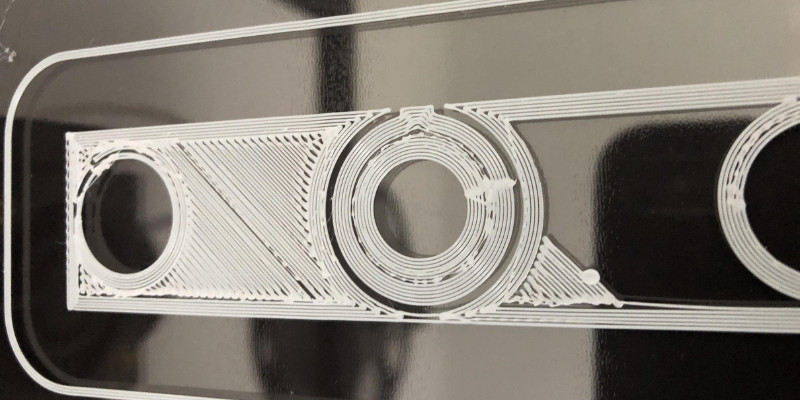
Here are the printer settings that most affect the initial layer impact. When in doubt, you should always check the settings recommended by your manufacturer, and make sure you stay within the limits they recommend for the filament you’re using.
Print Speed
Printing too fast, for example, will decrease accuracy as the printer rushes to finish the model. It might be tempting to set it to the maximum speed, but it’s good to remember that the general rule is the slower the speed, the more accurate the print.
Decreasing your printer speed and temperature in small increments during test prints is a good way to find the best settings that work for you.
Extruder Temperature
Printing too hot is also an issue, as overheated filament will take longer than usual to solidify and lead to inaccurately distributed layers.
The problem could also be with the cooling fan speed, which will also affect how long your filament sets. Adjusting this in lieu of your extruder temperature could help with dimensional accuracy.
Heat Bed Temperature
If you’re using a heated build plate, adjusting it helps with precision, especially in the initial layers.
To figure out which way you should adjust this temperature, simply note your model’s bed adhesion. If it sticks too well, then try lowering the temperature. Too poorly, and it should be increased.
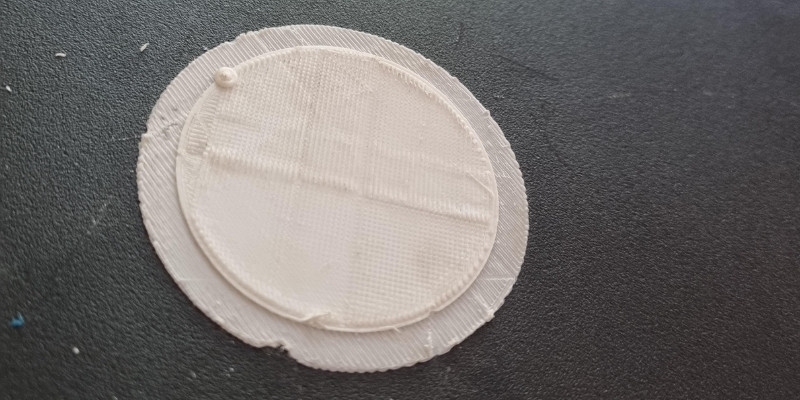
Keep in mind that not all filaments require a heated bed to work well, so be sure to double-check the kind of filament you’re using – and whether or not a heated bed is recommended.
Check for Extrusion Issues
The accuracy of your print is directly related to the efficiency with which your filament passes through the extruder. Both over– and under-extrusion cause dimensional inaccuracies, and are both caused by and lead to more problems like filament grinding and nozzle clogs.
Here are a few ways you can improve dimensional accuracy by ensuring efficient extrusion.
Clean Your Nozzle
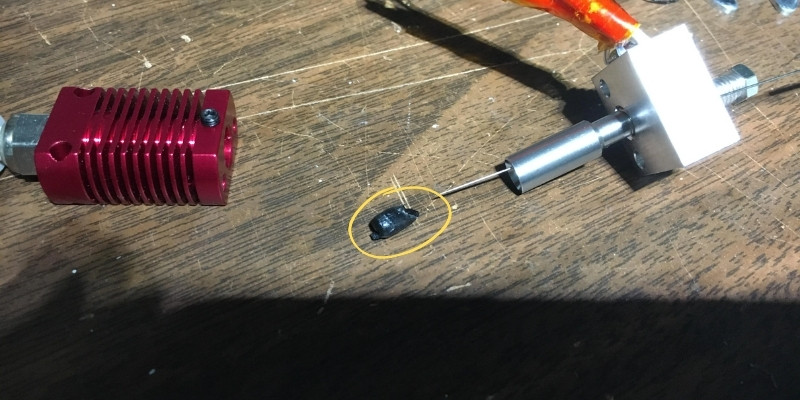
Nozzles clogged with filament and extra debris will be less efficient in cleanly feeding material through. Cleaning your nozzle with a wire brush, thin needle, or by cold pulling filament through a switched off extruder will help keep things running smoothly.
Just be sure that your 3D printer is completely switched off and cooled down before taking steps to unclog or clean your extruder.
Check for Filament Grinding
If your filament goes into the extruder fine but comes out shredded, it could be grinding against the extruder gears. This could be the result of a clog, in which case simply follow the steps above.
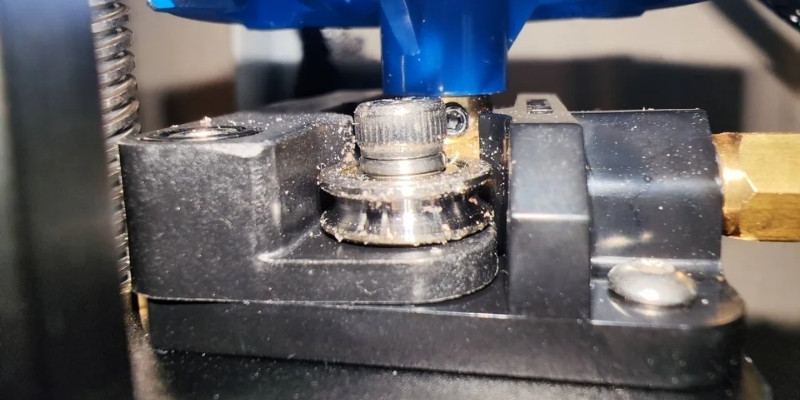
However, it could be the result of a worn gear, incorrect nozzle width for your filament, or an overly fast flow rate. If these all seem fine, then it could be an issue with retraction.
Alter Retraction Settings
Retraction involves momentarily stopping extrusion to prevent unwanted filament from being deposited between layers. If your extruder is set to retract too fast or too frequently, the ensuing extrusion issues will affect your print’s dimensional accuracy.
Simply turning down these settings is a great way to get more reliable prints.
Dimensional Accuracy of Different Filaments
Some filaments are better known for reliability and dimensional accuracy than others. So being extra careful with filaments that are either more fragile or prone to warping (making sure you’re using the right settings) is a great way to improve 3D print precision.
The more prone to warping, the less accurate you can expect the filament to be on average. ABS and PETG are tough materials, but both are less accurate on average than PLA.
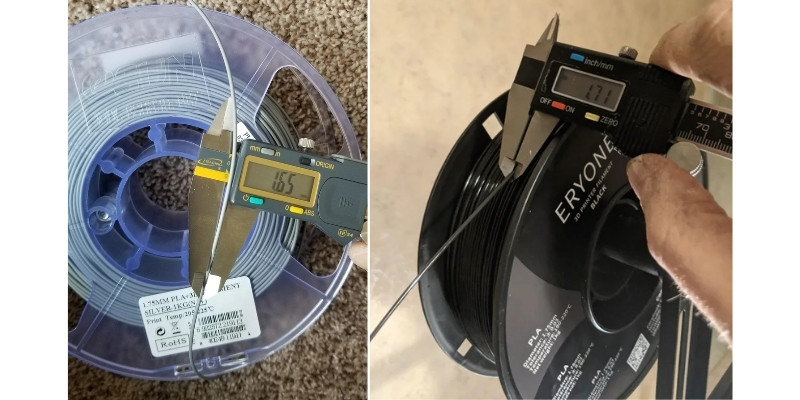
This is largely due to needing a heated build plate. While this helps with initial layer adhesion, it does make warping more likely if not used with care.
If you’re struggling with dimensional accuracy in your 3D prints but seem to be using ideal settings, it may be worth switching to a lower temperature filament like PLA.
This fix can be counter-intuitive, however, as dimensional accuracy is only strictly important with 3D printed parts designed for engineering projects. Because of this, PLA may not be ideal as it’s significantly weaker than filaments like ABS, PETG, or Nylon.
The better method is instead to have more control over your cooling fan. Putting it to a higher setting only after the initial layers have solidified will hold your print in place and make the heated bed less likely to warp the filament and decrease dimensional accuracy later in the model.
FAQ
Related posts:




















